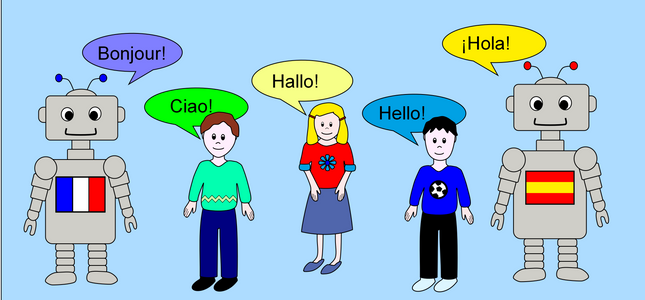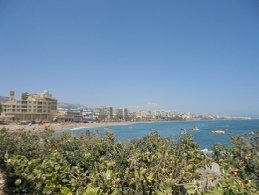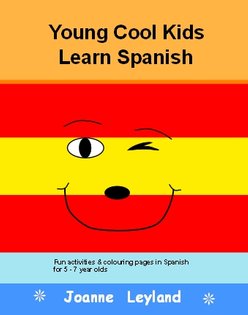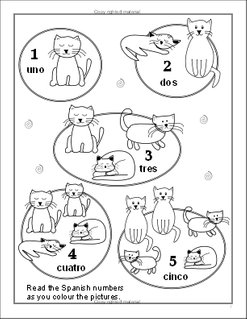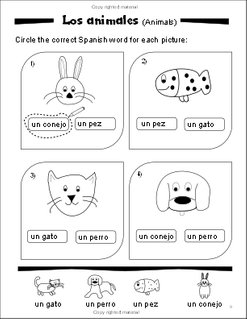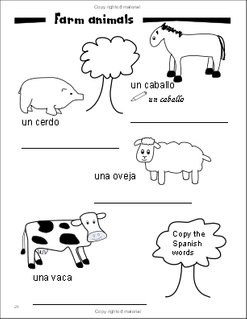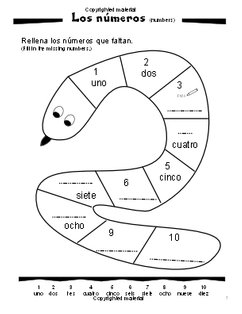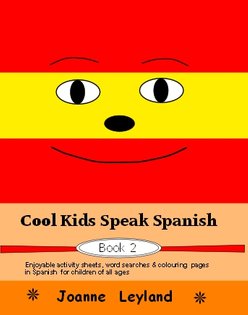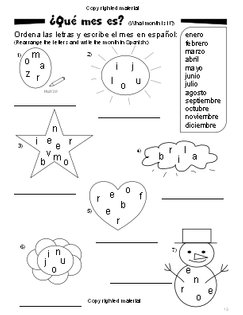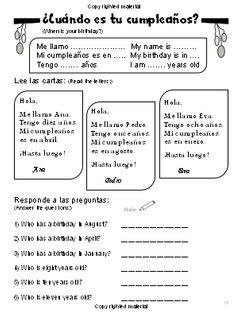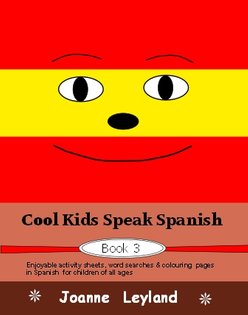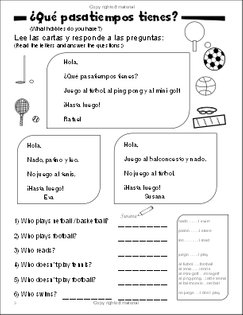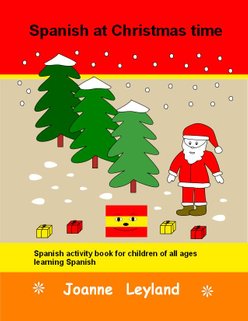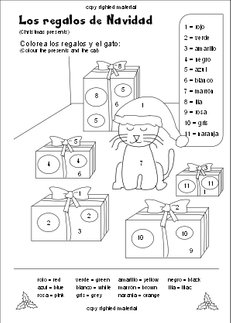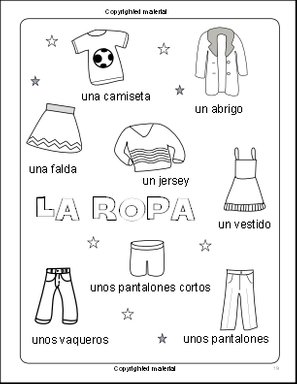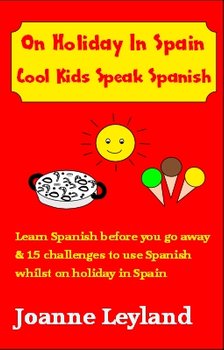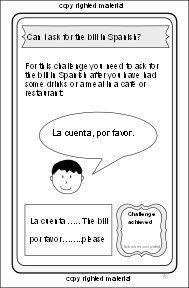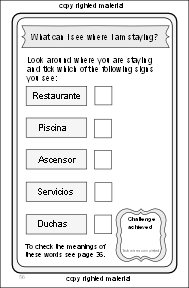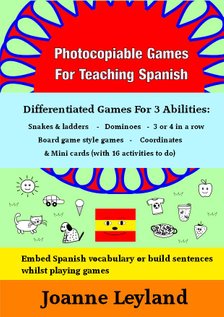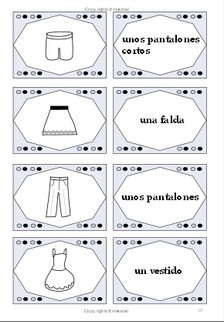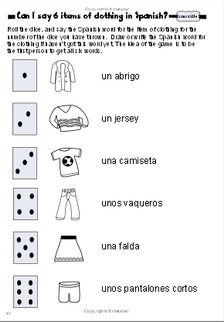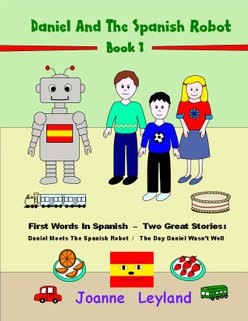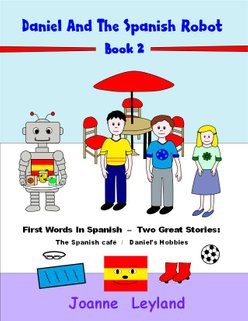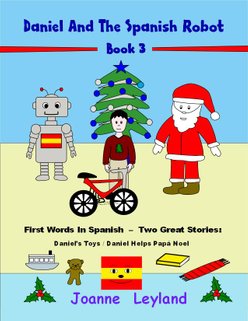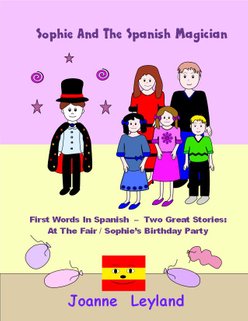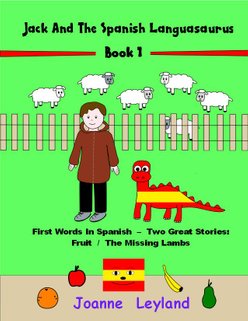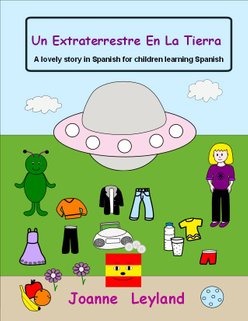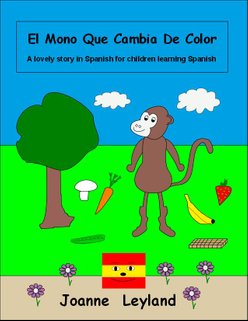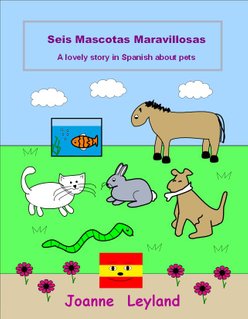FOREIGN LANGUAGES FOR CHILDREN
Why learn Spanish?
Spain has lots of charming cities and beautiful beaches so it is not surprising that it is a very popular holiday destination for tourists. And it makes a difference to be able to speak a little Spanish if you are planning a trip there as it's fun speaking Spanish and the locals really appreciate it if you have a go at speaking their language.
Spanish is also spoken in many countries in central and latin america.
What's the best way to learn Spanish?
To learn a foreign lanuage it's useful to learn lots of nouns. Nouns are the words for people, animals, places and things. Examples of nouns include a cat, a banana and a coat. There are lots of ways to learn new words, and we learn best when we are interested and having fun. So why not try a variety of the suggestions below?
Choose a topic, for example colours or pet animals.
Learn a few words each time you study Spanish. How many words you choose to learn is up to you! Everyone is different. I would recommend anything from 3 - 10 words each time you study. The ideal amount of words to learn will depend on how much time you have or how easily you remember the words. The thing that’s great about learning languages is that there is no right or wrong amount of words you should learn each time you study. It’s whatever you are happy with.
I always find it’s easier to learn words in a foreign language if you learn them as a topic as you can then go on to build sentences with these words and your word lists are easier to refer back to. It’s important to keep looking back at the words you have learnt so that you don’t forget them.
Young Cool Kids Learn Spanish has been written for 5 - 7 year olds learning Spanish. The lovely activities in this book include circling the correct word, writing 4 or 5 words per page, word searches, and drawing a line between the correct picture and the Spanish word.
Topics include
Pet animals Numbers Essential words Clothes The garden Farm animals Colours Ice creams
Cool Kids Speak Spanish Book 1
There are six lovely topics in each of the books in the series Cool Kids Speak Spanish. Every topic starts with a useful reference page showing pictures and all the words for that topic. These words are then practiced, and sentences are built using these words. Finally there is a fun word search to do.
Suggested age range: 7 - 11 year olds.
Topics in book 1 :
* Greetings
* Numbers
* Colours
* Clothes
* Pet animals
* Weather
Cool Kids Speak Spanish Book 2
Every topic starts with a handy introductory page showing pictures and all the new words for that topic. These words are then practiced, and sentences are built using these words. Finally there is a fun word search to do.
Suggested age range: 7 - 11 year olds.
Topics in book 2 :
* Fruit
* Birthdays
* Numbers 11 - 20
* Pencil case
* Drinks
* Transport
Cool Kids Speak Spanish Book 3
The topics begin with a lovely introductory page showing pictures and all the new words for that topic. These words are then practiced, and sentences are built using these words. Finally there is a fun word search to do.
Suggested age range: 7 - 11 year olds.
Topics in book 3 :
* Hobbies
* Numbers 21 - 40
* House
* Towns & cities
* School
* Descriptions
Spanish at Christmas time
This special Christmas edition is packed full of fun activity pages, word searches, colour by number pictures and board games. There are even some fabulous Christmas cards and a New Year card to make.
This great book may be photocopied for class or home use.
Suggested age range: 7 - 11
In addition to the fun activities and word searches in the above books, there are lots of ways to practice words that are topic based. Why don’t you try the following?:
Create your own poster with the new Spanish words written on it and proudly display it on the fridge or in your room.
Choose some pretty coloured pencils or pens and practice writing the new words in your best hand writing.
Play Guess The Word Game by looking choosing a word from the topic, and someone else has to guess what the word is. If you are using Cool Kids Speak Spanish, you could look at the first page for each topic for inspiration about what word to choose / to guess what it is. Opposite is the first page of the clothes topic in Cool Kids Speak Spanish.
Make Spanish-English word cards by cutting up a piece of card into rectangles. Ask an adult to be with you whilst you are using scissors. Then write the words you are practising on the cards. Write the Spanish word on one side, and the English word on the other.
Making your own sentences
Once you have learnt some nouns (words for things, people, animals and places) you can then learn how to build simple sentences.
Learning a language is fun, a bit like putting together the pieces in an amazing jigsaw puzzle and before you know it, you are making something really impressive.
Once you can put together you own sentences you can speak Spanish, and that is a good skill to have.
There are lots of ways of learning how to make your own sentences. The books in the range Cool Kids Speak Spanish introduce the new words in each topic, then practice how to make simple sentence structures. By developing sentences using the new words, you can learn how to make your own sentences. You can also practice making your own sentences by taking part in role roles.
Role play situations
Another great way to learn Spanish is to pretend you are in Spain or a Spanish speaking country, and role play situations like ordering something to eat or drink. It can be so much fun to pretend to be there and to have to speak in Spanish for a real purpose!
On Holiday In Spain Cool Kids Speak Spanish
In the first part of the book there are words and phrases to learn before you go on holiday, and in the second part there are various challenges to do whilst away.
The second part of the book could also be used for role play at school or home.
Topics include:
- Greetings
- Essential Spanish words
- Numbers
- Drinks
- Typical Spanish food
- Ice creams
- Hotels
- Campsites & around town
Suggested age range: 7 - 11 year olds
Games are a great way of practicing either new words or sentence structures.
You can design your own board game with pictures in the spaces for the Spanish words you are learning or you could use the games in the lovely book Photocopiable Games For Teaching Spanish. To play a board game, you will need a dice and one counter or player. The counters could be anything from cubes to small toys to rubbers - they just have to fit in the spaces in the game! And if you can't find a dice, you could make your own number cards by writing the numbers 1 to 6 on small cards, and then randomly selecting a card instead of rolling a dice.
Photocopiable Games For Teaching Spanish is packed full of games like snakes and ladders, board games, four in a row as well as photocopiable mini cards with which you can play numerous games. Once photocopied, this is a great classroom
resource that can be used time and time again.
The games are differentiated and are ideal for classes with 3 different abilities as the games are colour coded according to how many words each game requires. At the front of the book there is a detailed plan which shows which words the 3 ability groups have. The 3 groups are called verde, amarillo and rojo.
Reading a story is another great way of learning a foreign language, after all we all like stories!
For young learners aged 5-7 , it's nice to have the story in English with key words in the foreign language so that it’s easy to follow the story and focus the language learning on key vocabulary.
Daniel and the Spanish robot is about a robot who teaches Daniel Spanish. There are 3 lovely books available, and in each book there is two stories.
Sophie and the Spanish magician is about a magian that does various tricks in Spanish as Sophie learns how to say some new Spanish words.
There are two stories in the book.
Jack And The Spanish Languasaurus is about a Spanish speaking dinosaur who teaches Spanish to a little boy called Jack.
There are two stories in the book.
Stories are also great when simple storylines are completely written in the foreign language. The stories can be read and read again, embedding the language structures that appear in the sentences. The following books have been written in Spanish with a Spanish - English Translation at the back of each book:
Un Extraterrestre En La Tierra
El Mono Que Cambia De Color
Seis Mascotas Maravillosas
Cookie Policy
Cookies are small text files that are stored in your brower by websites you visit. They usually contain a website and an identifier. Cookies help improve your experience while browing on our website.
We use cookies to improve your browser experience, by remembering that you have logged in.
We use third party cookies to track how you use our website, for example what pages you visit and how long you spend on them. This helps us get a better understanding of how people are using our site and how they access it, which helps us create a better browsing experience. Our website obtains data to do web analytics from the access log files, and information is held for 2 years.
You can prevent cookies from being placed in your browser settings, though this may affect the functionality of websites that you visit. Cookies on our website are not essential, but may improve your experience.
Cool Kids Group
International House
61 Mosley Street
Manchester
M2 3HZ
email address: coolkidsbooks@yahoo.com
Follow us on twitter
For twitter click on either the language or languages of your choice
or copy and paste the twitter profile name.
Copyright 2024 - Cool Kids Group
